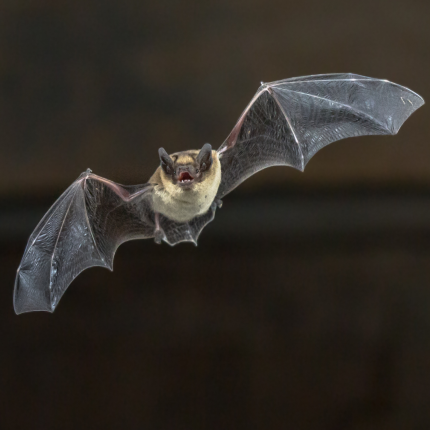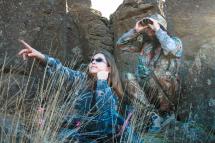Community science provides a platform where all Washingtonians can participate in data collection and analysis for scientific projects. By getting outdoors and looking for wildlife (or signs of it) people can learn first hand about the natural world and local wildlife. WDFW supports various community science efforts across the state.
Community science programs can be suitable for people of all ages and technical abilities, and are a great challenge for youth. By teaching kids powerful skills like observation, identification, data entry, and more, community science programs can help connect classroom learning with real-world application of knowledge. Additionally, these programs give the whole family an opportunity to contribute meaningful information to scientists throughout the state.
Community scientists can help provide important information about wildlife populations and trends. As a community scientist, you can contribute to research and conservation efforts from home, while learning more about local wildlife. With easy-to-use apps like eBird and iNaturalist, and local projects like Carnivore Spotter and Bat Activity Trends, it’s more fun than ever to contribute to community science!
Learn more about Community Science Projects in Washington.
ebird Northwest
eBird Northwest is a regional portal of Cornell Laboratory of Ornithology’s international eBird program. It was designed to support a growing regional partnership around the eBird citizen (community) science application. A major goal of eBird Northwest is to engage the birding community in science-driven conservation. It does so by providing content and services to birdwatching and natural resource management audiences primarily in northern California, Oregon, Washington, and British Columbia.
The eBird Northwest team supports the eBird Northwest website and builds partnerships to:
- Expand participation in eBird;
- Encourage community science efforts that support conservation through informed natural resource management;
- Increase the coverage and availability of community science data for conservation and education; and
- Provide news and information that enhances recreational wildlife viewing.
Find birds
Explore birds and hotspots near you and wherever you go, all based on the latest sightings from around the world. Find more birds.
Share your sightings
Join the world's largest birding community. Every sighting matters. Contribute yours. Share your sightings.
Track your lists
What's your latest life bird? What bird lists do you care about? eBird tallies them for you and archives your photos and sounds—all for free. Track your lists
Bat Activity Trends (BAT)

Did you know bats are found throughout Washington, even in urban areas? If not, it may be because their nocturnal lifestyle makes them easy to miss. However bats are important wildlife and biologists know little of their lifestyle trends.
In the the Bat Activity Trends (BAT) program developed by Woodland Park Zoo, you can learn how to observe bats, right in your own neighborhood. In this community science program, you'll explore answers to the questions: Where do bats live? Are there bats in my neighborhood? How do I know when there is a bat in the sky above me? By answering these questions, you'll help us get a better idea of where and when are bats are active around Washington.
You can participate from a yard, patio, balcony or even a window with a clear view of the sky! Alternatively, find a nearby park or take a walk for 30 minutes starting at or just after sunset during bats' peak active months (June-August). You will watch for bats, record what you see and submit the data to help create a visualization map of the levels of bat activity in our region.
- Program orientation
- Participation packet & data collection sheet
- How to Tell a Bat from a Bird in Flight
More resources, online trainings, community events and more are available on the Woodland Park Zoo program page. This program is free and open to anyone.
Taking time to learn how to observe bats can empower YOU to become a community scientist while learning more about local bat species and bat conservation issues.
Community science for classrooms
WDFW wants students and teachers to get outside and contribute to science through birding.

Our middle school lesson plan and supporting materials emphasize the importance of community science for gathering and recording large amounts of data and observing long-term trends. Educators have the option of birding as a one-time lesson or to gather data over time for a more robust student experience. Though the lesson highlights the Christmas Bird Count, the lesson could also be taught in the spring or fall.
Middle schools students explore the world of birding and community science. Students are introduced to Audubon’s Christmas Bird Count, the nation’s first community science project. Next, they identify common winter birds and use technology such as Merlin, eBird, and Project FeederWatch.
Learn more about this Wild Washington lesson plan.